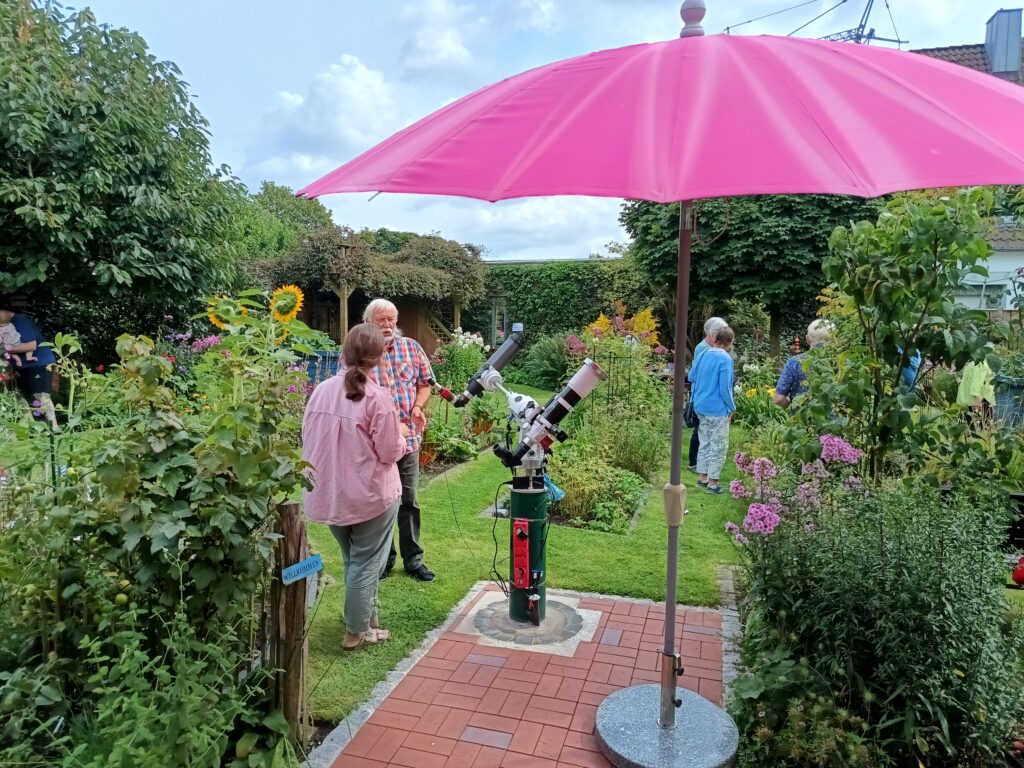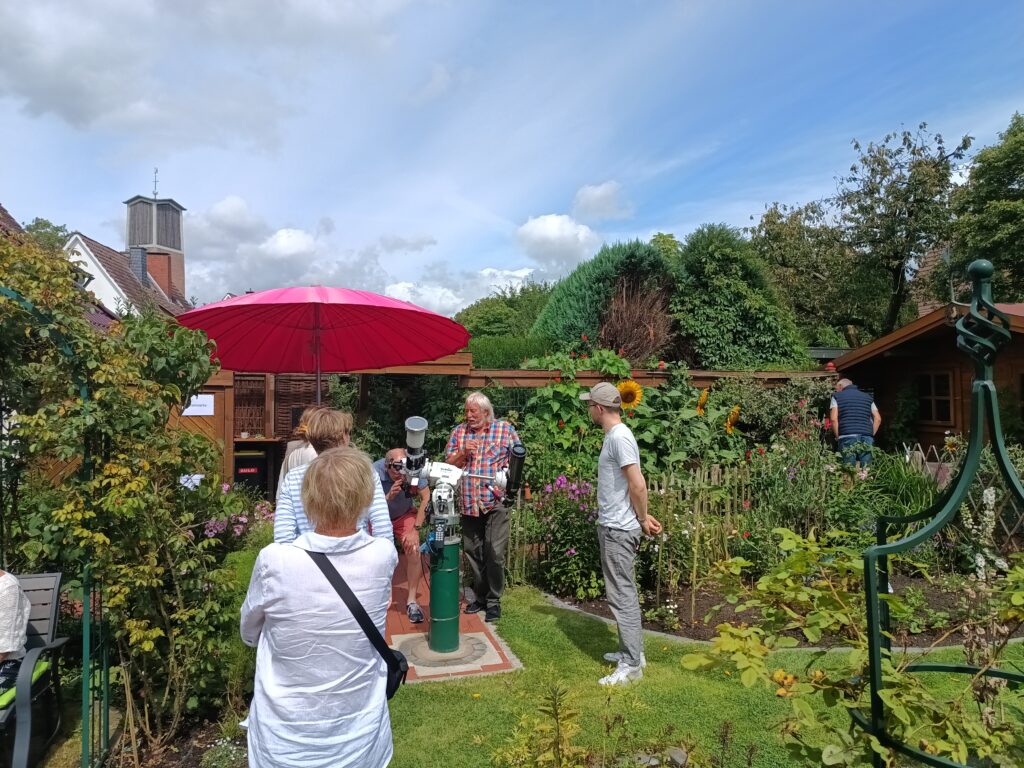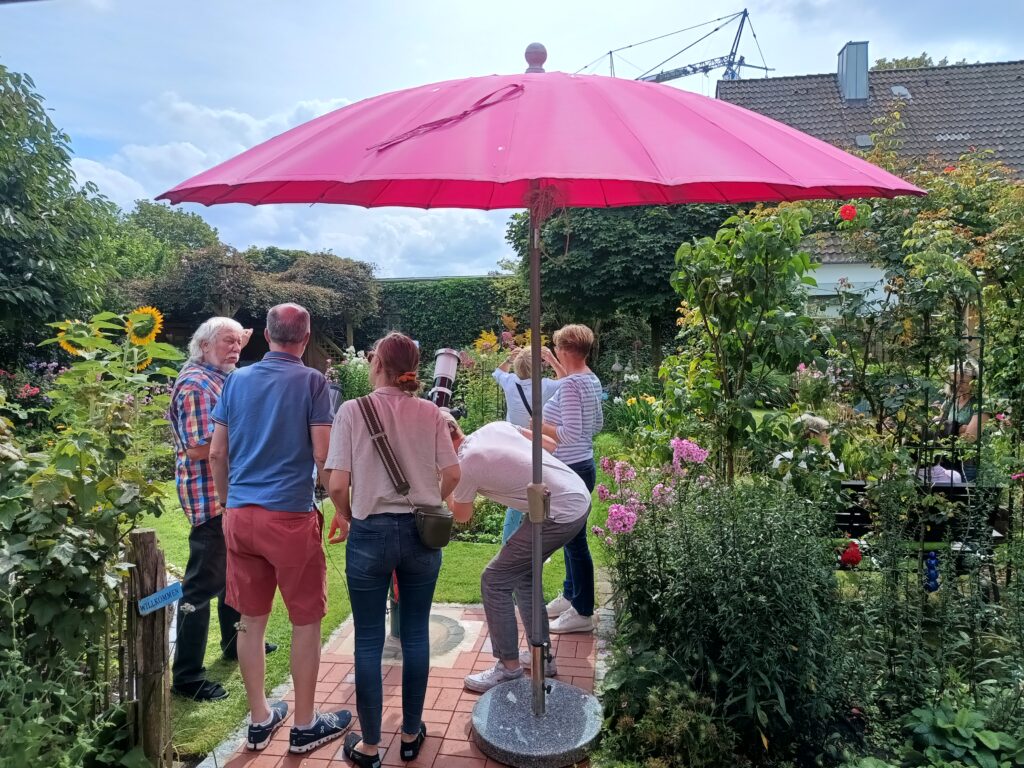In the Osnabrück region, many private gardens are opened to the general public every summer. Their owners are organized in the “Offenen Gartentor Osnabrück und Umgebung“. Anyone interested can get to know a variety of garden ideas.
This was also the case on Sunday, August 4, 2024, in the garden on Moorlandstrasse in Osnabrück. The special thing here: There is a garden observatory. Visitors were offered the opportunity to observe the sun through a telescope. Since this was also announced in the “Offenes Gartentor”, some garden visitors also or perhaps even precisely because of this made their way to Moorlandstrasse.
Two kosmos-os members were available at two telescopes from 11 a.m. to 6 p.m. to show and explain and to advertise their interesting hobby. Maybe some of the visitors will soon appear at one of kosmos-os' star gazing events.
Bei den Teleskopen handelte es sich um einen Skywatcher Apochromaten mit 80 mm Öffnung und 600mm Brennweite und ein Teleskop mit 80 mm Öffnung, Brennweite 680 mm mit dem H-alpha Filter – Quark – von Day Star. Beide waren auf eine AZ-EQ6 montiert. Die Sonne war sehr gefällig und zeigte viele Flecken, Flares, Filamente und Protuberanzen. Das Wetter hätte besser sein können, denn die Wolken und schlechte Durchsicht machten das Beobachten schwierig. Zum Glück rissen die Wolken zunehmend häufig auf, so dass am Ende doch fast jeder Interessierte einen Blick auf die Sonne durch eines oder beide Teleskope werfen konnte.
In the evening, the participants were a little tired, because there was almost always someone at the telescopes all day long, asking interested questions about astronomy. So our summary: A beautiful day with lots of good conversations about the sun, the stars and our interesting hobby.
Some snapshots from the day





Photo: Thomas Kunzemann, Preußisch-Oldendorf, https://sonneueberpreussischoldendorf.blogspot.com/